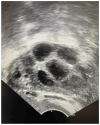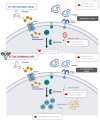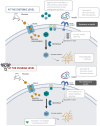Treatment With a Patented 3.6:1 Myo-Inositol to D-chiro-Inositol Ratio, Antioxidants, Vitamins and Minerals Food Supplement in Women With a History of Assisted Reproductive Technique (ART) Failures: A Series of Case Reports
- PMID: 38559382
- PMCID: PMC10981332
- DOI: 10.1177/11795476241242265
Treatment With a Patented 3.6:1 Myo-Inositol to D-chiro-Inositol Ratio, Antioxidants, Vitamins and Minerals Food Supplement in Women With a History of Assisted Reproductive Technique (ART) Failures: A Series of Case Reports
Abstract
Infertility affects 15% of couples in reproductive age worldwide. In women in particular, infertility can be caused by various abnormalities, with polycystic ovary syndrome (PCOS) being the most common. Currently, there are many assisted reproductive techniques (ART) available to combat the burden of infertility. However, positive results are not guaranteed. The administration of inositol has been shown to increase positive reproductive outcomes in women undergoing ART. Here we present a series of clinical cases in which women with a history of infertility and previously failed ART, supplemented with a specific 3.6:1 MYO:DCI ratio, antioxidants, vitamins, and minerals for a period of 1 to 3 months before undergoing in vitro fertilization (IVF). In this series of case reports, we provide preliminary evidence that supplementation with a specific 3.6:1 MYO to DCI ratio, as well as antioxidants, vitamins, and minerals may contribute positively to female fertility in women undergoing IVF, with a history of primary or secondary infertility and previously failed ART.
Keywords: In vitro fertilization (IVF); MYO:DCI ratio; female infertility; inositol; polycystic ovary syndrome (PCOS).
© The Author(s) 2024.
Conflict of interest statement
The author(s) declared no potential conflicts of interest with respect to the research, authorship, and/or publication of this article.
Figures



Similar articles
-
Strategy to improve the female fertility in the general gynecologist's office: use of a nutritional supplement based on myo-inositol/D-chiro-inositol and antioxidants.Gynecol Endocrinol. 2022 Apr;38(4):275-278. doi: 10.1080/09513590.2021.2015759. Epub 2021 Dec 21. Gynecol Endocrinol. 2022. PMID: 34931570 Review.
-
Comparison of the effect of two combinations of myo-inositol and D-chiro-inositol in women with polycystic ovary syndrome undergoing ICSI: a randomized controlled trial.Gynecol Endocrinol. 2019 Aug;35(8):695-700. doi: 10.1080/09513590.2019.1576620. Epub 2019 Mar 16. Gynecol Endocrinol. 2019. PMID: 30880505 Clinical Trial.
-
Inositol Treatment and ART Outcomes in Women with PCOS.Int J Endocrinol. 2016;2016:1979654. doi: 10.1155/2016/1979654. Epub 2016 Oct 4. Int J Endocrinol. 2016. PMID: 27795706 Free PMC article. Review.
-
Breakthroughs in the Use of Inositols for Assisted Reproductive Treatment (ART).Trends Endocrinol Metab. 2020 Aug;31(8):570-579. doi: 10.1016/j.tem.2020.04.003. Epub 2020 May 15. Trends Endocrinol Metab. 2020. PMID: 32418772 Review.
-
High dose of d-chiro-inositol improves oocyte quality in women with polycystic ovary syndrome undergoing ICSI: a randomized controlled trial.Gynecol Endocrinol. 2020 May;36(5):398-401. doi: 10.1080/09513590.2019.1681959. Epub 2019 Oct 26. Gynecol Endocrinol. 2020. PMID: 31657275 Clinical Trial.
References
-
- World Health Organization. Infertility. Assessed on March 2024. https://www.who.int/news-room/fact-sheets/detail/infertility
-
- Collée J, Mawet M, Tebache L, Nisolle M, Brichant G. Polycystic ovarian syndrome and infertility: overview and insights of the putative treatments. Gynecol Endocrinol. 2021;37:869-874. - PubMed
-
- Society for Assisted Reproductive Technology. Final national summary report for 2019. SART national summary report. Assessed on March 2024. https://www.sartcorsonline.com/rptCSR_PublicMultYear.aspx?reportingYear=...
Publication types
LinkOut - more resources
Full Text Sources

